Lessons
Hundreds of lessons that are hands on, correlated to recent standards and teach core subject areas.
What We Eat – Part 1
Students will sort fruits and vegetables by examining plants – grown in the school garden, purchased in the market, or featured in models or pictures – into the parts of the plant eaten as food, identify a serving size, and locate where on MyPlate the food belongs.
View LessonMy Garden, MyPlate
Students will become familiar with the foods they eat and healthy eating habits while learning about the MyPlate food categories.
View LessonSalad Rap – Part 1
Students create a rap song/chant and dance promoting the components of their favorite salad, and use chant as a device to remember that plants do not eat and only plants produce food.
View LessonVegetable Relay
Students will match vegetable seeds with the vegetable and learn a basic food fact about each then participate in a relay.
View LessonA Rainbow of Nutrition
Students will research foods made from plant families (with support as needed), identify family members and common nutrients and create artwork of one family group or a food made from that family.
View LessonYo Seeds, Wake Up!
The way we plant seeds is very important. If seeds are planted too deeply, the young plants can use up their food resources before they ever reach light and begin to make their own food. If planted in soil that’s too dry, seeds may not obtain the necessary moisture to germinate. Soaking-wet soil, on the other hand, may prevent seeds from getting oxygen, or may cause them to rot.
View LessonWe’re the Producers!
The purpose of gardening within an educational setting is to utilize the garden as an educational tool. The garden and skills developed by gardening provide concrete examples of theoretical or abstract concepts or processes. This is critical for some students and will result in both greater understanding of difficult concepts and application of those concepts across diverse topics. Before one can garden well, a great deal of science needs to be understood and applied. The understanding of photosynthesis is the first of those concepts. This lesson is designed to make this relatively abstract process concrete for students and, in particular, young students.
View LessonWhat Are We Eating?
A significant reason to engage in gardening in schools is to teach students, and allow them to discover for themselves, how plants grow and what part of the plant we eat. That is the purpose of this activity.
View LessonGarden Art
Students will be introduced to artists and their work in order to prepare them to create their own garden art or still life portraits. Appreciating the beauty of still life art and garden produce will increase interest in foods grown in the garden. Students will use that appreciation to develop promotional art to be displayed in the school to encourage fellow students to eat more fruits and vegetables.
View LessonIt’s on the Label
Learning to read and utilize food labels and information from the U.S. Department of Agriculture, students will compare nutritional value and caloric content of canned, frozen, and fresh fruits and vegetables, compare portions to serving sizes by actually measuring both and scale label information in direct proportion to recommended caloric intake.
View Lesson
